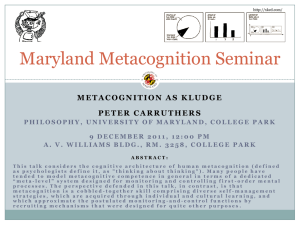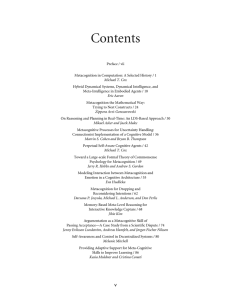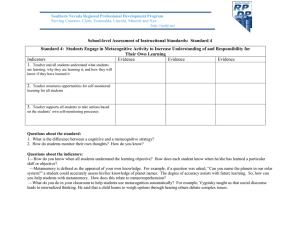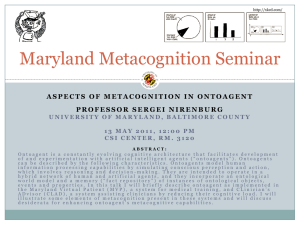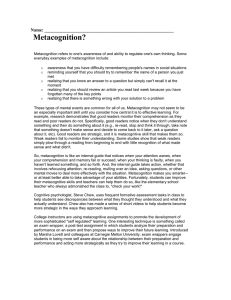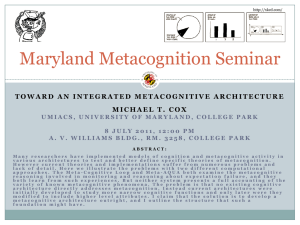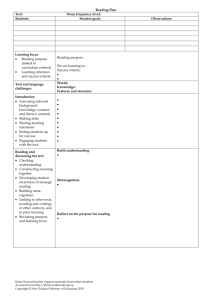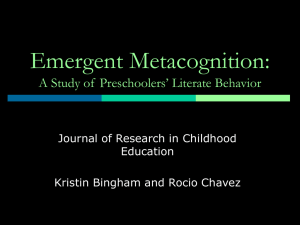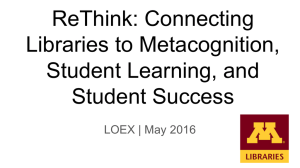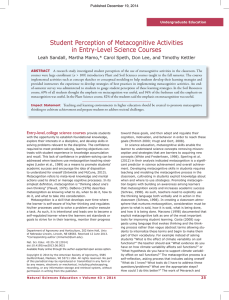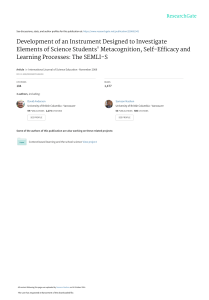#5: Metacognition
advertisement
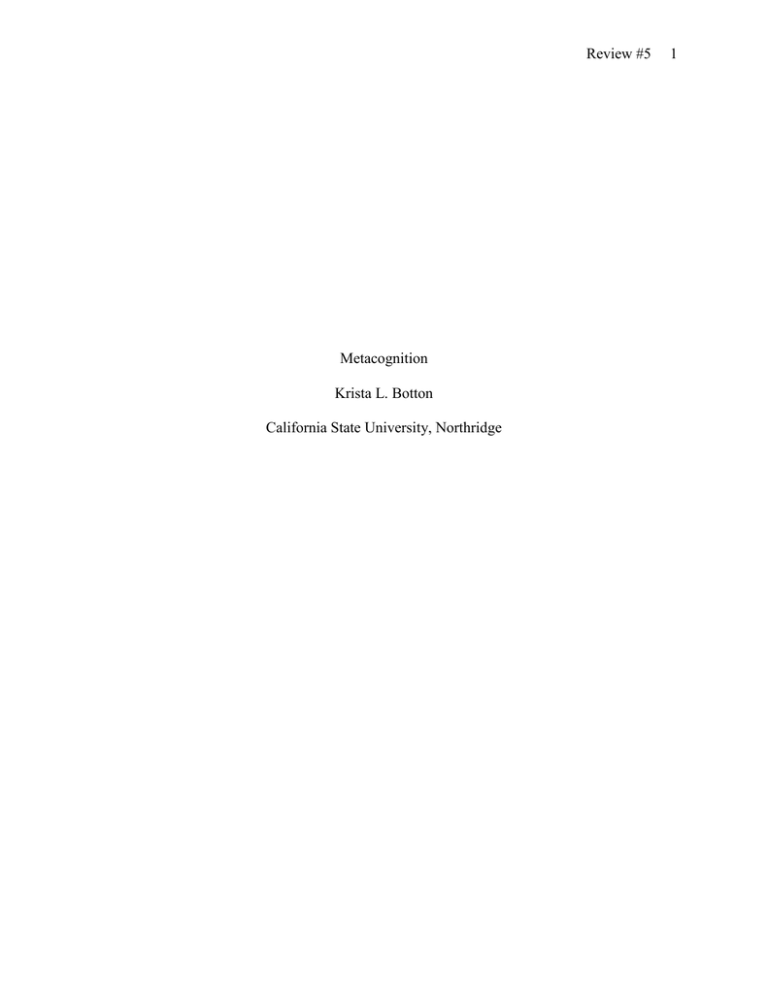
Review #5 Metacognition Krista L. Botton California State University, Northridge 1 Review #5 2 Metacognition Defining Metacognition Merriam-Webster’s online dictionary defines metacognition as “the awareness or analysis of one’s own learning or thinking process.” The National Research Council (2005) adds that “metacognition is used to refer to people’s knowledge about themselves as information processors” (p. 10). By either definition, the role of the teacher becomes apparent. Part of any teacher’s daily goal it to help their students learn and come to some realization of the process they had to take to get there so that the process will be able to be successfully repeated. Metacognition is so inherently important to the teaching process that the National Research Council has assigned it as one of the three important principles of learning and instruction in their text, How People Learn. Through their research and lesson analysis, the National Research Council claims that “strengthening metacognitive skills…improves the performance of all students, but has a particularly large impact on students who are lower-achieving” (p. 577). I know that in my classroom improving student’s performance is an important goal, one that I continually work to find ways to achieve; thus, this is an important aspect that will play a role in my own action research project as I introduce students to visual representations of material, increasing their awareness for the ways that they can both learn and represent material. Metacognition in Science Science is a subject that naturally allows for the metacognitive development of students. As students are faced with inquiry situations students are often asked to come up with an explanation for what they observe happening, this causes the student to reflect on the inquiry and its process and make connections to information they may have already learned. In addition they must evaluate their claims, as well as the claims of others to come up with a collaborative Review #5 3 explanation for their group. They participate in the learning process and create ideas that can be compared with those of other groups and discussed in class with teacher guidance or even among their groups as they search for possible explanations. Science easily allows for a wide variety of teaching strategies which enables students to become aware of the ways that they learn best and gives them ample opportunity to use these strategies when covering content material. Science, through a nature of experimentation, provides many opportunities for kinesthetic learning either through the use of manipulatives, or through actual lab design and procedure. Visual learning can be reinforced through the analysis of models and diagrams, and auditory learners will find their niche in the discussion of ideas and results from classroom activities. Application to My Action Research In my action research I hope to help my students become more reflective analyzers of visual materials; to help them understand the role that diagrams and models may have in their understanding and learning of science content. Students will be exposed to visual representations of course material in place of lecture which will allow discussion of the material from pictorial perspective. I am hoping to engage all learning styles through an active drawing of diagrams, discussion of material, and of course, a visual representation of concepts. This will, in turn, allow them to reflect on different methods to learn and represent material and become more aware of diagrams in their studies. They will have a better understanding, when comparing their representations to others of what they know and how they came to understand what they know. Review #5 4 References National Research Council. (2005). How Students Learn: Science in the Classroom. Committee on How People Learn, A Targeted Report for Teachers, M. S. Donovan and J. D. Bransford, Editors. Division of Behavioral And Social Sciences Education. Washington, D. C.: The National Academies Press.
